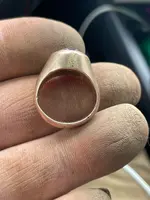To estimate the weight of stones versus gold in jewelry, you can use a combination of techniques, including weighing the entire piece, using karat gold calculators, and considering shape factors for gemstones. Here's a breakdown:
1. Weighing the entire piece:
Use a precise scale: Employ a jeweler's scale or a high-precision digital scale to measure the total weight of the jewelry.
Record the weight: Note the total weight of the piece in grams or carats.
2. Estimating the gold weight:
Determine the karat purity:
Karat purity indicates the percentage of pure gold in the alloy. For example, 14K gold is 14/24 pure, meaning 14 parts of pure gold and 10 parts of other metals.
Use a karat gold calculator:
These calculators can help estimate the gold value based on karat purity and weight, says United Precious Metal Refining. You can also calculate this manually by multiplying the total weight by the karat purity fraction.
Consider alloy mix:
14K gold is made by mixing 1.00g of 24K gold with 0.72g of alloy mix, resulting in 1.72g of 14K gold, according to United Precious Metal Refining.
3. Estimating the stone weight:
Shape factors:
Gemstones can have different weights depending on their cut and shape. Wide corners or wings can increase or decrease the apparent weight, says the International Gem Society.
Use specific gravity:
Specific gravity (SG) is the ratio of a substance's density to the density of water. Knowing the SG of the gemstone and its dimensions, you can estimate its weight, says GIA.
Consider setting:
The way a stone is set in the jewelry can also affect its apparent weight. For example, wide or shallow settings may reduce the apparent weight of the stone, according to the International Gem Society.
4. Refining the estimate:
Subtract the estimated gold weight from the total weight: This will give you an estimate of the stone weight.
Consider variations: The actual weight of stones can vary, so your estimate may not be exact.
In essence, you need to:
Weigh the entire piece.
Estimate the gold weight based on purity.
Estimate the stone weight by considering shape, specific gravity, and setting.
Subtract the estimated gold weight from the total weight to get an estimate of the stone weight.
This process will help you get a good approximation of the weight of the stones in your jewelry, relative to the gold.







